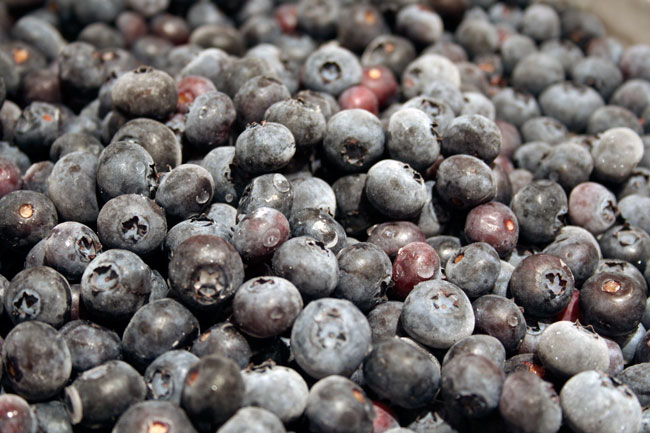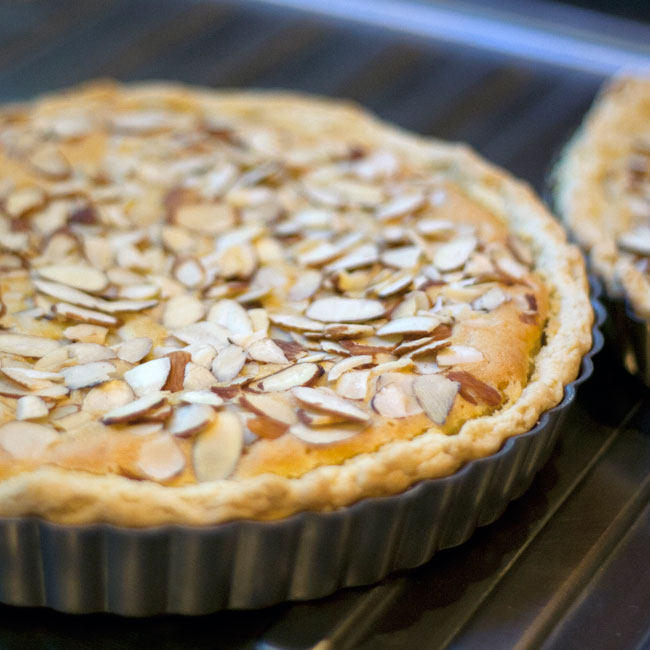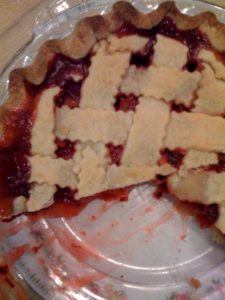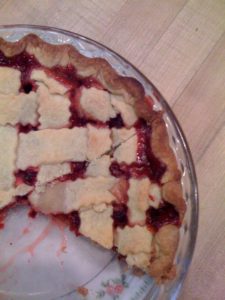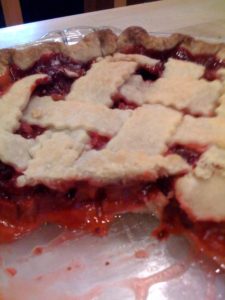Filling:
- 1/3 cup dark raisons
- 2 tablespoons brandy (Grappa is more Italian; brandy is more Sconnie)
- one 15-ounce container whole milk ricotta
- 2 large eggs
- 1/2 cup sugar
- 1 teaspoon vanilla extract
- 1 teaspoon grated orange zest
- 2 ounces, about 1/3 cup, semi-sweet chocolate chopped into bits (or use mini-chips)
Crostata assembly & serving:
- One batch of double crust pasta frolla. Your choice, but I prefer scented with orange zest for this tart.
- One large egg yolk beaten with a little water for egg wash
- Confectioners sugar, if desired
Roll out the bottom crust:
On a lightly floured surface, roll out half the dough into a 10-inch circle, that’s about 1/8 inch thick. Fit the dough into a 9-inch fluted tart pan with a removeable bottom. Trim the overhang to about 1/2 an inch, and fold and press that into the sides of the pan, to make the sides thicker than the bottom. Chill the shell for abut 30 minutes.
Prepare the filling:
Soak the raisons in the brandy for 30 minutes.
Mix the ricotta, eggs, sugar, vanilla, and orange zest in a large bowl until no streaks of egg remain. Stir in the raisons with all their liquid, and the chocolate.
Assemble the crostata:
Heat the oven to 350°, with a rack in the bottom third.
Spread the filling into the chilled bottom crust.
Roll out the second disk of dough into a 10-inch circle, and cut as many 1-inch wide strips as you can. Use a fluted pastry cutter if you have one, or a knife.
Brush the edges of the tart with the egg wash. Lay about half the strips across the tart going one direction. Brush them with the egg wash. Lay the remaining strips cross-wise over the other strips, forming a lattice – no need to weave. Brush with egg wash.
Put the tart in the oven (if you’re worried the pan may leak, place a cookie sheet or round pizza pan under the tart pan) and bake for 30 to 35 minutes, or until the pastry is golden brown. Cool on a rack for 10 minutes, or until cool enough to handle, and then remove the outer rim of the tart tin.
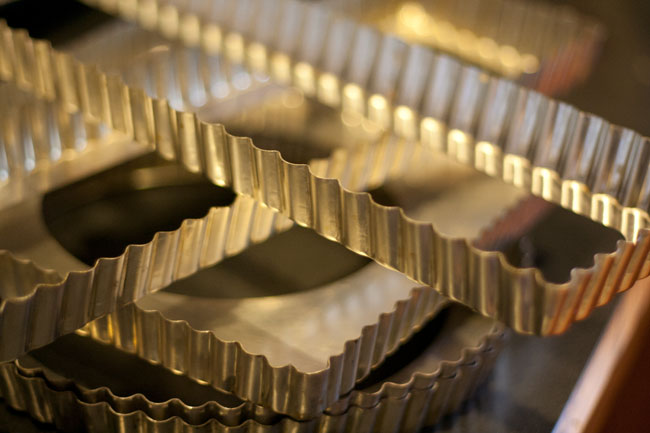
For Orange Tree Imports cooking class
